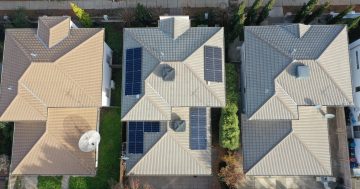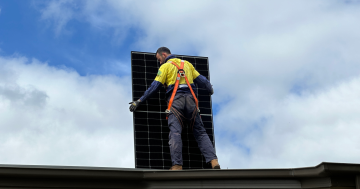
Is your solar system no longer meeting your electricity needs? It might be time for an upgrade. Photo: Mondiaux Solar.
Chances are the solar system you would install in your home today would not be what you have now, according to one expert.
Mondiaux Solar Renewable Energy Consultant Brian Zhang says there are many contributing factors as to why a person’s existing solar system is no longer meeting their electricity needs and why they may need an upgrade.
Households typically have many more devices today than they did a decade ago.
“As time goes on, we tend to accumulate more devices and appliances, so it stands to reason our electrical needs go up,” he says.
“Your existing solar system may not be big enough to handle the additional demand.”
But even in the unlikely event you haven’t bought a single extra device or appliance, your panels may not be up to the task they were in their heyday.
Over time, solar panels degrade. The average lifespan of the technology is eight to 10 years, and the solar panels of yesterday are not as advanced as the ones currently being manufactured.
There are other reasons your electricity requirements may have changed – such as the move towards electrification.
“Some customers switch to electricity from gas as their power source for things like their stoves, water heaters and so on,” Brian says.
“Or you might want to get an electric vehicle [EV].”
This year, the ACT, where EV numbers have tripled compared to 2022 and almost one in five registered cars was now electric, was officially leading the charge in the country’s zero-emissions vehicle transition.
The cost of living crisis is another incentive to consider an upgrade as soaring electricity prices make selling power back to the grid more appealing.
“Older solar systems might not be able to generate enough to keep up with this need,” Brian explains.
“Some clients who have old solar systems, at the time of installation, probably contracted with the government on a 10-year agreement for around 40 cents feed-in tariff, but their solar system itself might be very small,” Brian explains.
“In general, they’re only 2 kW to 3 kW. And with degradation, they don’t produce as much electricity as they once did.”

People upgrading their solar systems may choose to “future-proof”. Photo: Mondiaux Solar.
Brian says most people installing new solar systems today will opt to maximise their roof space to future-proof their needs.
“They know we’re moving towards an increasingly electrical future, so even if they don’t need that energy now, they can sell it back to the grid,” he says.
If you have introduced more devices to your household, purchased an EV, switched to electricity from gas, or your system is simply old and possibly degraded, it might be time to consider an upgrade. If so, there are two options.
Simply adding more solar onto the same inverter isn’t possible unless your inverter has a spare Maximum Power Point Tracking [MPPT] channel or you’re using a “micro-inverter” system.
“It’s safe to say 99 per cent of people don’t have a spare MPPT. Everyone wants to maximise the capacity of their inverter, so they’re going to use all the capacity they have,” Brian says.
If you have enough space, the first option is to install an additional independent system, with new panels and inverter, that runs in tandem with your current system.
The second option is removing the existing solar system and installing a fully upgraded one. This is the most suitable option for anyone using more advanced technology.
One of the most important factors to consider is the “payback period” – how long it takes for the cost of the solar system to pay itself off with a combination of savings and power sold back to the grid.
For example, if your annual electricity costs are $2500 and your solar system costs $6000, saving you $2000 a year, your payback period would be just over three years.
Brian says there are various factors to consider when calculating this, such as energy prices in your location, policy or system costs.
“Generally speaking, the payback period is three to four years. Budget-friendly systems can be shorter – maybe two to three years,” he says.
“If your system has already paid for itself but is no longer meeting your electricity needs, it might be time to consider an upgrade.”
For more information, contact Mondiaux Solar.





















